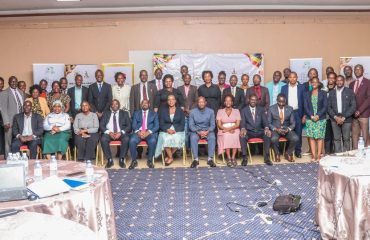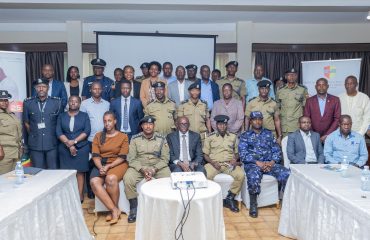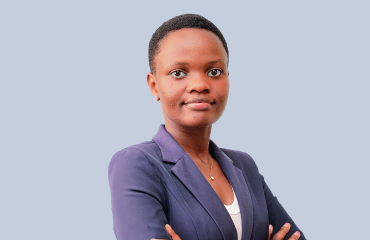Reading the Manifestos of both candidates, one can’t help but wonder whether one of them should be trusted even to lead himself. Please hear me out. The much younger candidate, Robert Kyagulanyi aka Bobi Wine, just 43 years old, assumed to be young and vibrant, full of fresh ideas, 38 years younger than the 81-year-old Yoweri Kaguta Museveni aka Ssemalungu, is too lazy even to write a one-page message without the use of Artificial Intelligence. I am appalled that the critical thought required of any leader, the stature of a President of our country, could be outsourced to an AI chatbot, which Mr Kyagulanyi used to generate his personal message on page (iii) of his manifesto, in probably less than 60 seconds.
However, to avoid accusations of bias, let’s proceed step by step, assessing the content of each candidate. Due to limitations of space, this article shall focus on comparing two things: the preamble and message of Robert Kyagulanyi Ssentamu in the National Unity Platform’s (NUP) Manifesto (2026-2031), and the message from the National Chairman (of NRM), Yoweri Kaguta Museveni, in the National Resistance Movement’s Manifesto (2026-2031).
Both candidates published their Manifestos on September 29, 2025. Kyagulanyi’s Manifesto is 104 pages; Museveni’s is 185. Therefore, on the judgment of form alone, Museveni’s Manifesto is 81 pages heavier or has 81 pages more to say about Uganda than Kyagulanyi’s. But to be fair to Kyagulanyi, let us not judge a book by its cover, as the saying goes. Let us open the pages.
Kyagulanyi’s Manifesto opens with a preamble of 1,567 characters. When run into GPTZero, an AI content detection tool used by over 10 million people and 380,000 educators, and relied on by reputable organisations like the New York Times, BBC, CNN, The Washington Post, Forbes, The Wall Street Journal, to name but a few, the preamble to Kyagulanyi’s Manifesto is scanned to be only 5% written by a human, 82% mixed, and 13% AI generated. For proof of this claim, one can find the report of the scan here.
Kyagulanyi’s preamble is followed by his personal message on page (iii). This message is important because, whereas a candidate can claim that the rest of the Manifesto is written with the help of party staff, the “Message from the Party President,” as it is titled, cannot be said to have been written by somebody else. It is a representation of the candidate himself. Kyagulanyi’s message, which runs on only one page and constitutes 2,533 characters, when run into the AI detector, is scanned to be 82% AI-generated, 13% mixed, and only 5% human! For evidence of this claim, one can find the report of the scan here.
Now, on the probability of the Manifesto of the National Unity Platform being authentic, based on the sample above, we can reasonably believe that it is an AI-written document. Even then, we shall interrogate the depth or substance of their Manifesto. We must be fair enough to judge them at their best, even if their best constitutes messages generated by machines and algorithms.
Before broaching the substance of Kyagulanyi’s message, let’s, in the spirit of fairness, subject Musevin’s own message in the NRM Manifesto to a similar clinical, forensic examination as we did Kyagulanyi’s.
Museveni’s personal message, titled “Time for the Qualitative Leap Forward,” runs from page 5 to page 19. Therefore, whereas Kyagulanyi’s very important message about the change and transformation he wants to see in Uganda covers merely one page, Museveni’s personal thoughts on Uganda in the NRM manifesto take 14 pages!
When checked through GPTZero, the same AI detector we used to examine Kyagulanyi’s message, Museveni’s message of 34,990 characters is scanned to be 99% written by a human, 1% mixed, and 0% AI-generated. For proof of this claim, one can find the report of the scan here.
But one may say that it is superficial, in the age of AI, to judge a candidate based on whether they used the assistance of an AI chatbot to write their Manifesto. Although I would find that argument dull, given the significance of proof of intellectual depth and rigour expected of a Presidential candidate, I will still bend for it, and so try to dig into the substance of each candidate’s message, despite one candidate’s use of Artificial Intelligence to think for them, on a subject as important as the destiny of a country.
Let us begin by critically analysing the preamble to NUP’s Manifesto. To declare a personal bias, my analysis will overlook the beauty of the rhetoric of the preamble – because Manifestos are not literary contests – and rather focus on making the preamble compare and compete against the internal practices of the party, the conduct of NUP’s top leadership, and their party history. I believe these would be good baselines for comparison.
Whereas Kyagulanyi’s political party is called the National UNITY Platform, and its Manifesto opens with an allegation that Uganda’s political and constitutional history is turbulent due to a lack of unity, it is not very convincing that this is a party that considers national unity as a foundational principle, given the significant internal fragmentation eating away at them. Ironically, an observation of NUP’s profile in the last five years could define the party as the National DISUNITY Platform.
Despite its political base being heavily concentrated in Buganda, exposing its inability to transcend regional politics, the party has still failed to hold together its ethnic base, with high-profile candidates from Buganda and Mengo, such as Mathias Mpuuga and Medard Ssegona, purged from the party. However, NUP may claim that the two leaders above or even other high-profile leaders like Abed Bwanika, who left the party, were simply selfish people pursuing personal interests, but how about the NUP Northern Uganda registrar, Rackara Robinson and 60 others, including 11 sub-county coordinators, who crossed from NUP to NRM in 2020? These were ordinary, grassroots mobilisers, who faulted the party for preaching hate, pushing for violence and ideological bankruptcy.
NUP has also failed to unite with its fellow opposition parties, but instead instigated more intra-opposition conflicts. Museveni’s NRA was able to win the war in 1986 partly because it united with other political parties and fighting groups, including Yusuf Lule’s Uganda Freedom Fighters (UFF), the Uganda National Liberation Front – Ad Hoc Committee (UNLF-AD), and later united with Moses Ali’s Uganda National Rescue Front (UNRF). But I guess that’s a lesson Kyagulanyi will learn another day.
NUP’s preamble also talks about guaranteeing equal opportunities for all, ensuring democracy, accountability, and inclusive development. However, the decision-making within the party is highly centralised around Kyagulanyi and his small inner circle, including his brother, Chairman Nyanzi Fred Ssentamu. The ordinary “Foot Soldiers” are relegated to praise-singing, not decision-making.
There has also been criticism of the party’s transparency regarding the handling of donor funds, raising questions about Kyagulanyi’s promises of accountability as leader of Uganda. The preamble also appeals to the rule of law, which is a misnomer for a party which increasingly seems to be under the rule of Kyagulanyi and a few friends and family. Kyagulanyi’s respect for national institutions also seems to depend on their siding with him, raising questions as to whether he is truly democratic at heart. The preamble concludes by claiming that NUP is dedicated to building “A New Uganda Now.” But, beyond being a literary device and an emotional appeal, one wonders where the party’s actual policy position on reforming Uganda is. And whereas the preamble speaks big about accountability, it makes no mention of mechanisms to hold the party accountable if it fails to deliver on its huge promises.
Whereas NUP may have succeeded at wearing the “People Power” populist grassroots clothing, a closer lifting of the veil reveals that the party is still very distant from being truly democratic and participatory, based on its internal politics, controversies and contradictions.
For his one-page, AI-generated personal message, Kyagulanyi simply laments and recycles political rhetoric.
Now, let’s turn to Museveni.
This 81-year-old man starts his 14-page message by recapitulating the history of Uganda’s economy and society. Whereas Kyagulanyi starts his message with lamentations, Museveni begins with a thorough analysis. He breaks down Uganda’s journey since independence into five distinct phases of growth and recovery under his party’s leadership, highlighting the growth of the economy from USD 3.9 billion in 1986 to USD 66.1 billion today, and emphasising that Uganda’s economy has therefore expanded 17 times ever since 1986!
Unlike Kyagulanyi, whose message is all platitudes and no self-reflection, Museveni confesses to several weaknesses, especially corruption, which he identifies as something to continue working on, rather than as something he denies. Museveni observes that Uganda’s growth was made possible due to peace and security, correct economic policies, and infrastructure development, which enabled the country to move from a collapsed informal economy under Idi Amin to a recovering, expanding, diversifying, value-adding, knowledge economy of today.
In a great revelation of clarity of purpose and consistency of effort, Museveni states that his message has not changed since the 1960s. And therefore, with this Manifesto, he is simply amplifying the same message. This message is built on seven critical pillars for Uganda’s continued prosperity: Peace, Development (National), Wealth (Individual/family), Jobs, Services, Markets, and Strategic Security.
Museveni has a deep, wide, philosophical and even academic understanding and therefore a thorough grasp of each of the above pillars. He views peace as something achieved through interest-based rather than identity-based politics. He views development through the lens of providing infrastructure, such as transport, energy, etc, to lower the cost of operating businesses. He views wealth creation by breaking it down into four sectors: commercial agriculture, i.e., intensive and extensive farming, manufacturing and artisanship, services, and ICT. His historicization of unemployment (lack of jobs) reveals that this is a colonial relic, showing that in traditional African settings, everyone was employed, and unemployment was shunned, but it was colonialism that redefined work and exacerbated unemployment. And therefore, he is reviving the Emyooga systems that have already created over 10 million employment opportunities. He advocates for markets through East African and continental integration. He also advances political federation as the guarantor of Africa’s strategic security.
He projects that by adding value to all of Uganda’s produce, and also intensifying our involvement in the knowledge economy, we shall be able to grow into a USD 500 billion economy in a few years. He foresees the transformation of the old traditional society of peasants, feudalists and artisans, which was already distorted by colonialism that killed the artisan class, into a productive middle class and a skilled working class.
Reading through the ideas of both candidates, it is obvious who the right candidate is.
The writer is a Ugandan thinking about Uganda.
By Nnanda Kizito Sseruwagi




